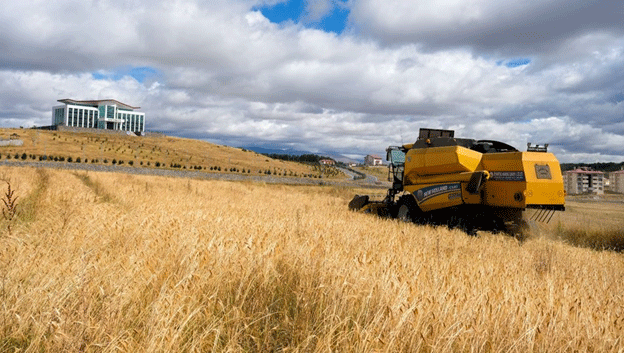Ancient Seeds, Modern Revival: Kavılca Wheat’s Comeback in Turkey
A once-forgotten grain with roots dating back 13,000 years is taking root again—this time with a new mission. Kavılca wheat, an ancient hulled wheat (Triticum monococcum), has been brought back to life by Ardahan University in eastern Turkey, making headlines for its potential to contribute to agrobiodiversity, regional development, and sustainable farming practices.
According to a statement from Turkey’s Council of Higher Education (YÖK), Kavılca wheat was planted on 100 decares (10 hectares) of land at the university campus. Since 2021, over 600 farmers have received training and support to grow this traditional crop, known for its resilience and unique nutritional profile. The grain is now being processed into value-added products such as pasta, noodles, and bulgur, through a dedicated production facility established on-site.
Why Kavılca Wheat Matters
Kavılca wheat is a diploid wheat species, one of the earliest domesticated crops in the Fertile Crescent. Unlike modern wheat, Kavılca is rich in protein, antioxidants, and minerals, and is often better tolerated by individuals sensitive to gluten. Its hull protects the grain from pests and diseases, reducing the need for chemical inputs and making it a good candidate for organic farming systems.
The revival of Kavılca wheat aligns with global trends in agricultural biodiversity conservation. According to FAO, over 75% of crop diversity has been lost in the last century due to the dominance of a few high-yielding varieties. Reviving ancient grains like Kavılca helps diversify the genetic base of global wheat cultivation and supports climate adaptation strategies.
Connecting Agriculture and Gastronomy
Ardahan University’s Gastronomy and Culinary Arts Department has turned Kavılca into more than a field experiment. Faculty members use the flour to create innovative food products, aiming to connect traditional grains with modern food culture. This integration of agriculture and gastronomy opens new markets and boosts the cultural and economic value of heritage crops.
Additionally, the university has become a hub for regional development, contributing to rural employment, food entrepreneurship, and knowledge transfer. These efforts illustrate how universities can act as engines of local innovation, as emphasized by YÖK President Erol Özvar.
The revival of Kavılca wheat is more than an agricultural success—it is a model of how ancient wisdom and modern science can work together. As global food systems face challenges from climate change, monoculture, and nutrition-related diseases, the resurgence of resilient, nutritious ancient grains like Kavılca offers sustainable, inclusive solutions. For farmers, agronomists, and researchers alike, Kavılca wheat is a seed of hope for the future of food.
Error





